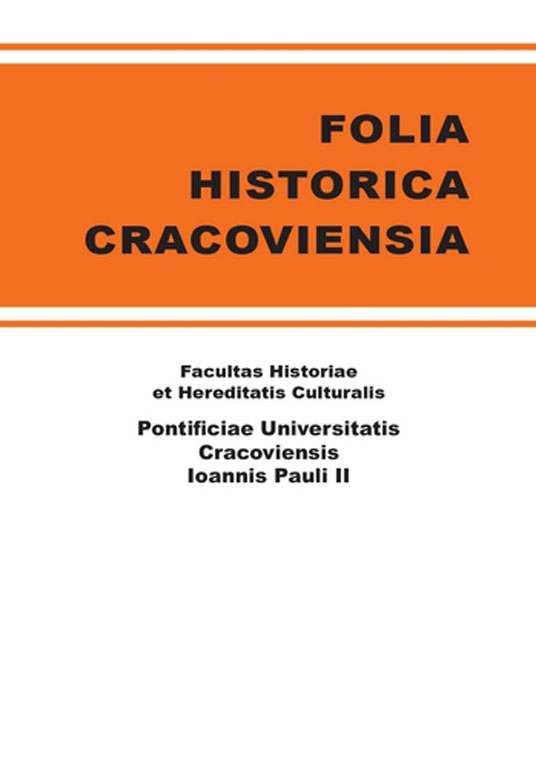The Cracow’s pious laymen or Beghard heretics? From the study on the 14th century Tractatus contra beghardos by Henryk Harrer
DOI:
https://doi.org/10.15633/fhc.214Keywords:
The Cracow’s pious laymen, beghards, Tractatus contra beghardos, Henryk HarrerAbstract
Tractatus contra beghardos written by a Chech Dominican Henryk Harrer is a masterpiece of exceptional value for both historians of the medieval heterodox movements as well as for scholars interested in the history of theology and law in the 14th century. The treaty was commissioned by Cracow Dominicans in the years 1328 to 1334. Commissioning the treaty to Henryk Harrer, a stranger expert from the Prague monastery of St. Clemens was dictated by a series of controversies among Cracow clergy around the judgement of conduct of a certain group of people whose religious practices and a way of life stood out from the rest of the congregation. Undertaking the task of writing the treaty Henryk Harrer based his work around three charges pressed against the suspected of heresy: breaking off the Church and establishing an illegal organization (singularitas vite); corrupted attitude towards recognized religious practices (contemptibilitas sacramenti eucharistiae); numerous flaws and perverse disposition (pertinax voluntas). Not only did Harrer decide to comment on all aspects of life of central figures of Contra beghardos but he also honestly mentioned all arguments he was not able to undermine. Despite these objective difficulties, the Czech Dominican was certain that the expertise he came up with was sufficient to link the lay movement with the sect of Beghard Heretics.
The author of this study proved that, contrary to Harrer’s keen intention, his Tractatus contra beghardos does not unambiguously show heresy in the Cracow diocese. What is more, the reader, instead of indictment against the conduct of a group of laymen paradoxically received a confirmation of their innocence and orthodoxy. In the light of analysis of the text Contra beghardos, the claim that Beghard Heretics from Harrer’s work turn out to be pious layman, living in communion with the Church, seems to be fully substantiated. Of course their way of life and the practice of asceticism made them stand out from the other members of the congregation but were completely in line with the Church legislation. In this context, Harrer’s work is an original testimony of numerous misunderstandings about the Beghard movement and stormy times of forming a new kind of piety among lay members of Church.
Downloads
Published
Issue
Section
License
Copyright (c) 2012 Tomasz Gałuszka

This work is licensed under a Creative Commons Attribution-NonCommercial-NoDerivatives 3.0 Unported License.
Authors who publish with this journal agree to the following terms:
- Authors retain the copyright and full publishing rights without restrictions, and grant the journal right of first publication with the work simultaneously licensed under a Creative Commons Attribution 4.0 International License that allows others to share the work with an acknowledgement of the work's authorship and initial publication in this journal.
- Authors are able to enter into separate, additional contractual arrangements for the non-exclusive distribution of the journal's published version of the work (e.g., post it to an institutional repository or publish it in a book), with an acknowledgement of its initial publication in this journal.
- Authors are permitted and encouraged to post their work online (e.g., in institutional repositories or on their website) prior to and during the submission process, as it can lead to productive exchanges, as well as earlier and greater citation of published work (See The Effect of Open Access).

